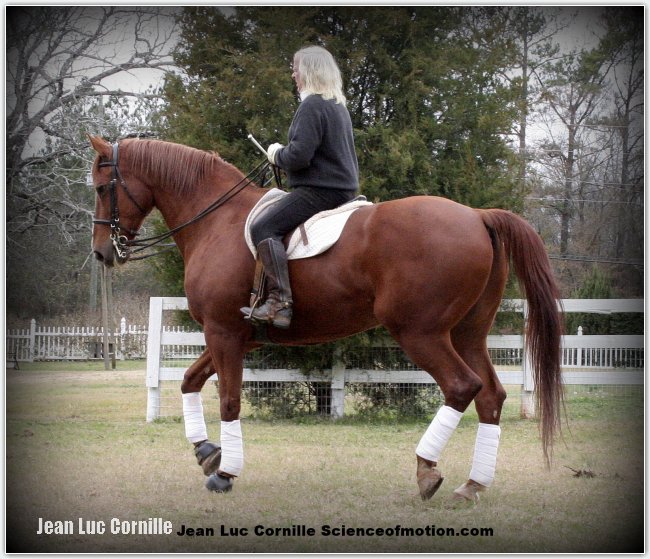Creating a functional horse
Creating a functional horse
Equine Biomechanics

Dressage and In hand horse trainer
Jean Luc Cornille
The horse's back muscles' work is very complex, further exposing the stretching theories' naivety and inaccuracy. The complexity also underlines the importance of the horse's mental processing. The subtle orchestration of the back muscles is created in the horse's brain, and the first aim of academic equitation is training the horse brain to think in terms of body coordination instead of gesture.
Albert Einstein wrote, "The intuitive mind is a sacred gift, and the rational mind is a faithful servant. We have created a society that honors the servant and has forgotten the gift." The thought applies to both the horse and the rider. Instead of supporting the horse's gift with advanced knowledge and innovative techniques, we submit the horse's talent to a system. Instead of supporting the rider's skill, equestrian education downgrades the rider's intuition to the studious application of "correct aids." Einstein also wrote, "Education is not the learning of facts, but the training of the mind to think." When the riding technique's purpose became the application of correct aids, the education annihilates the rider's intuition. Factual documentation allows the researcher to think further. So are correct aids. They are not the finality of ridding but instead a teaching tool aiming at subtle coordination of the rider's body. When such precise coordination is achieved, the rider's body becomes the language through subtle muscle tone nuances. There are no longer "aids." The phenomenon is not exclusive to riding. In 1992, the founder of Aikido wrote, "Ultimately, you must forget about technique. The further you progress, the fewer teaching there are. The great path is really no path." ( Morihei Ueshiba)
In a previous installment (IHTC), we talked about "vibrating at the horse's frequency." The concept is, in fact, a key component of efficiency. Each of our movements, increase or decrease of our muscles' tone, needs to be tuned to the horse's frequency. The three fundamental words of classical wisdom are "Forward, Calm and Straight." Calmness does have a rhythm, which is the horse's natural cadence, and without this rhythm, there is no calmness, no forwardness, and no straightness. The difficulty of becoming a good rider, teacher, and trainer is that we have to evolve from an education structuring our dialogue with the horse into formulas, aids, principles to a more artistic approach combining intuition, emotion, sensitivity, creativity, empathy, and rhythm. Empathy needs to be deep in our hearts. If we think that the horse should do it because we apply the proper aids, we will not succeed. We must assume the horse errors at the deepest level of your mind and body. Not that we are necessarily responsible for the horse error, but because we are the only ones who can analyze the error and therefore find the root cause. We kindly take responsibility for the horse error finding a way to provide adequate insights.
Creating a functional horse and, therefore, an athlete performing soundly and at its utmost potential is about orchestrating the whole physique, starting with the vertebral column, which is the basis of all body movement. In 1980 Leo Jeffcott wrote, "The biomechanics of the vertebral column, although very complex, is of vital importance because they form the basis of all body movements." Nobody understood the importance of Jeffcott's statement, not the equestrian world and not the veterinary world. Direction, intensity, and frequency of the forces acting on the hind and front limbs and, therefore, proper or abnormal kinematics originate primarily from the work of the thoracolumbar column's muscles. The concept is a decisive step forward and away from classical inspiration, which still regards the limbs' action as the main source of equine athletic performances and veterinary treatment that still regards hock problems as the root cause of vertebral column dysfunction. Jean Luc Cornille



 twitter
twitter facebook
facebook delicious
delicious stumbleupon
stumbleupon pinterest
pinterest blogger
blogger